

|
This page contains supporting material for Scott Sherman's talk at Gathering for Gardner 10 in March 2012. Flex TheoryThe Flex Theory paper was my gift for the gathering. It includes a description of Flex Notation, useful for describing sequences of flexes, and Pat Notation, useful for describing the internal structure of a flexagon as it changes during flexes. 10 flex, 12 leaf kite hexaflexagonThe following flexagon was designed to show off 10 different flexes (in honor of the 10th Gathering) with only 12 leaves (because the year is 2012). To make this 5-sided kite hexaflexagon:


Alternately, you could use the following black and white template. Rather than pasting anything to the back, simply copy the small numbers to the back and follow the remaining directions above. 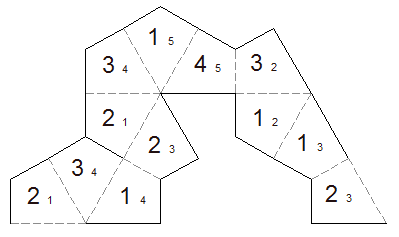
Whether or not you can perform a flex depends on the internal structure of the flexagon. Thus, in order to perform each of the 10 flexes, you need to do them in a location that supports the flex. You can try out each of the flexes by following this recipe: With all 1's on the front and all 2's on the back, you can do the pyramid shuffle if you start next to the small 3 in the middle of the flexagon.  Next, turn the flexagon over and you can do the flip flex. 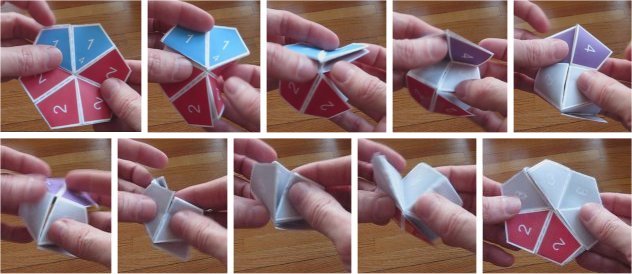 Turn it over again and you can do the inverse tuck flex. 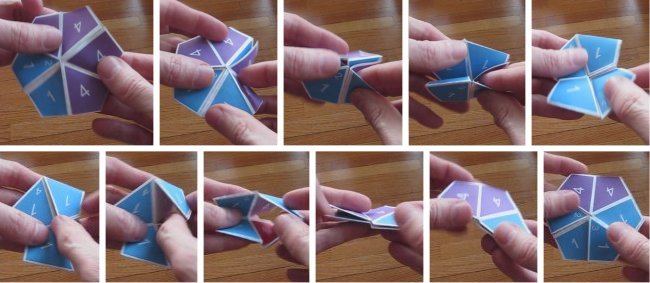 When you're finished with the inverse tuck, turn it over and you can do the tuck flex. Note that I'm counting the tuck and inverse tuck as two different flexes because they change the internal of the structure in different ways, unlike most of the rest of the flexes listed here. 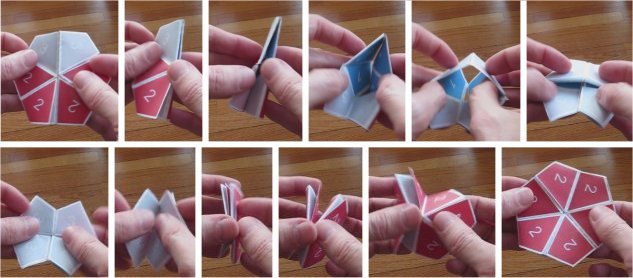 You should now be back to the starting position, with all 1's on one side and 2's on the other. You can now do the silver tetra flex if you put the edge with the tape on the left hand side. 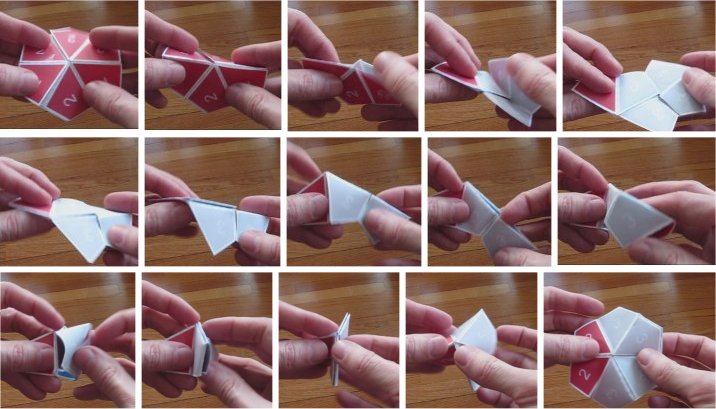 Next you can v-flex. Note that the flexagon won't lie flat after this flex. 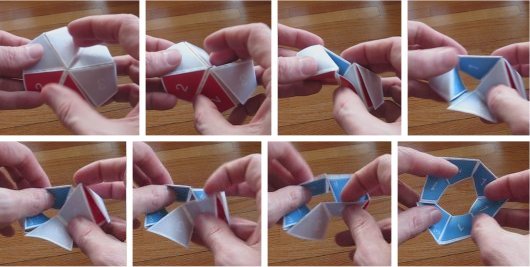 After turning it over, you can do the pinch flex twice to bring you back to the starting position once more. 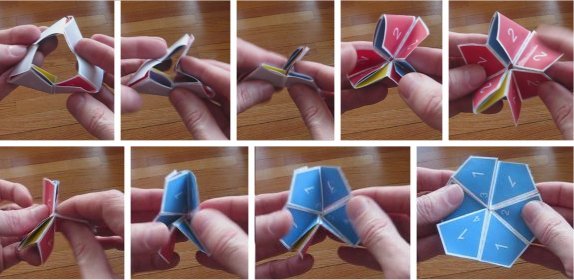 You can do the slot tuck flex if you start near the small 4 in the middle of the flexagon. 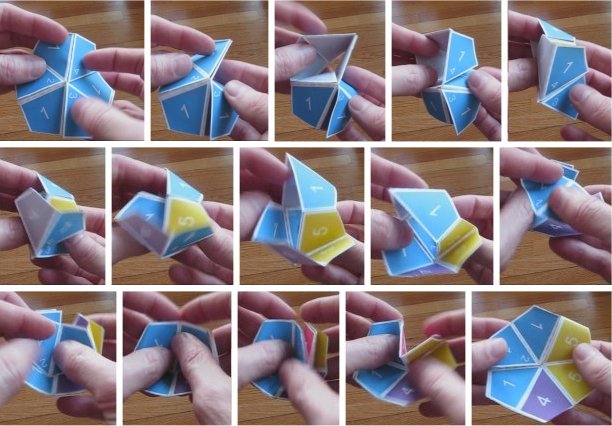 Turn the flexagon over and you can do the slot tuck bottom flex. This is just like the slot tuck except that you open it up from the bottom rather than the top. The flexagon will not lie flat at this point. 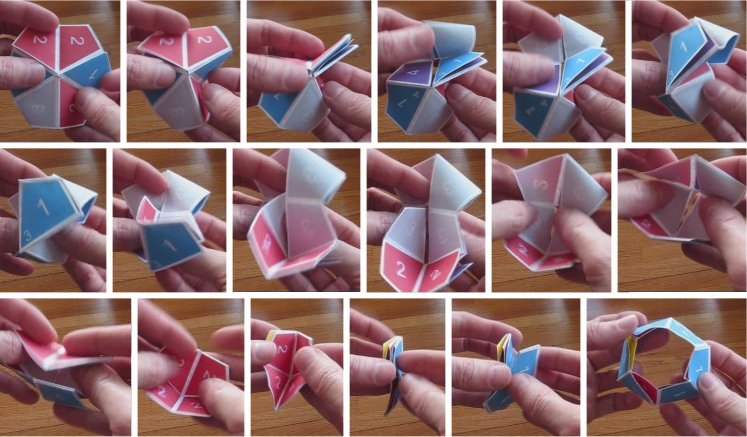 Finally, a pair of pocket flexes brings you full circle. Note that the small 2 in the middle of the flexagon is on the left-most leaf at the beginning of this flex sequence. 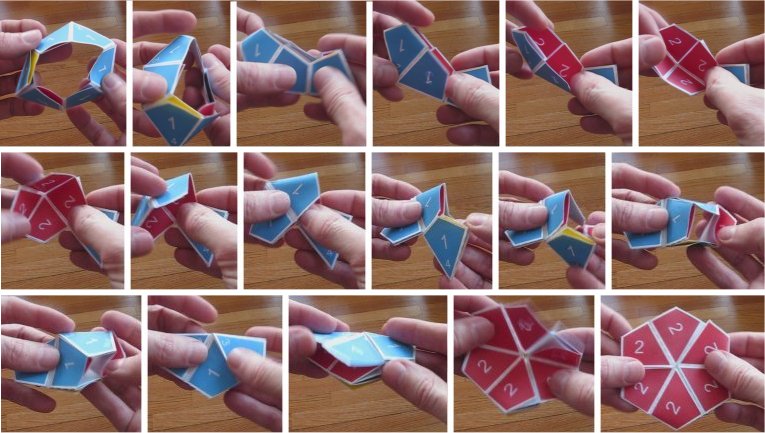 |
